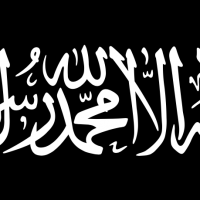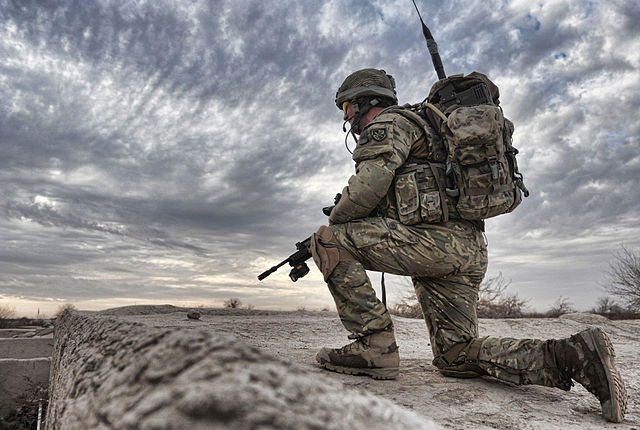By the end of 2024, South Korea’s democracy faced its most profound challenge. President Yoon Suk Yeol’s unexpected declaration of martial law sent shockwaves through the nation, testing the resilience of democratic institutions, which turned out to be more fragile than expected. For allies like the United States, the stakes extended far beyond Seoul, threatening to shift the balance of power in a region already fraught with strategic competition. At its core, this moment was more than a domestic struggle; it was a battle over democratic values in an increasingly contested world.
The Events
On December 3, 2024, at 10:27 p.m. (KST), South Korean President Yoon Suk Yeol declared martial law during a televised address. The decree, which took effect at 11:00 p.m., imposed significant restrictions, including a ban on all political activities and public assemblies, as well as severe limitations on press freedoms. In addition, the president reportedly ordered the arrest of several political figures, including leaders of the Democratic Party of Korea (DPK) and his own People Power Party (PPP). [1]
By the time the martial law decree came into effect at 11:00 p.m., lawmakers, the police and civilian supporters were urgently heading to the National Assembly. Civilians constructed temporary barriers around the Assembly to safeguard the proceedings, shouting for “non-violence.” [2] Despite the imposed restrictions on political activity and press freedoms, citizens in Seoul assembled to demand an immediate end to martial law, with some protesters also calling for President Yoon’s resignation, and the media continued to report on the unfolding crisis. [1]
At approximately 11:40 p.m., around 300 Special Forces personnel, transported by military helicopters, were deployed to prevent the legislature from convening. At 12:45 a.m., the military personnel entered the National Assembly and attempted to force their way into the main hall, gaining access by breaking a window. The delay was attributed to several reasons. Firstly, the inadequate communication from the president’s office. Moreover, many soldiers were hesitant to act and deliberately slowed their efforts to carry out orders to fully implement the martial law directive. Also, civilians tried blocking soldiers by using fire extinguishers, which prevented their entry. Despite the tension, the soldiers refrained from using force against civilians. [3] [4]
The delays in military mobilization created an opportunity for lawmakers to enter the National Assembly. At around 1:00 a.m., 190 members of the National Assembly convened an emergency session in accordance with constitutional procedures. The session saw bipartisan collaboration, as 18 members of the ruling People Power Party joined the opposition in unanimously voting to revoke President Yoon’s martial law decree. Consequently, Speaker Woo Won-shik of the National Assembly instructed the military to leave the Assembly’s Proceeding Hall. Later that morning, at around 4:30 p.m., President Yoon announced that he would abide by the National Assembly’s decision and lift the martial law order. [1]

The next day, on December 5, nearly 74 percent of South Koreans supported the impeachment of President Yoon. The following day, December 6, Han Dong-Hoon, leader of the People Power Party, called for Yoon’s immediate suspension from office. [1]
On December 7, after President Yoon issued a public apology for the „anxiety and inconvenience“ caused by the crisis, the National Assembly held a vote on his impeachment. However, the vote was boycotted. 200 votes out of 300 are necessary for impeachment, but three of the 108 PPP members walked out before the proceedings concluded in order not to reach that requirement. [1]
In an early morning address to the nation on December 8, Han Dong-Hoon again called for Yoon’s „orderly resignation.“ Meanwhile, prosecutors confirmed the arrest of Yoon’s defense minister, Kim Yong-Hyun, who resigned on December 5 for allegedly suggesting the martial law declaration. [1]

Finally, on December 14, 2024, with 204 votes in favor, the National Assembly impeached President Yoon, suspending him from office. Prime Minister Han Duck-Soo briefly assumed the role of acting president until his own impeachment on December 27, following accusations from the opposition of obstructing Yoon’s impeachment process. Consequently, Finance Minister and Deputy Prime Minister Choi Sang-mok was appointed acting president. [5]
On January 15, 2025, Yoon became the first sitting South Korean president to be arrested. The Chief Investigation Officer (CIO) indicted him with „leading an insurrection and abuse of power“ on January 23. [6]
The Road to Martial Law
South Korean President Yoon Suk Yeol’s declaration of martial law was an unprecedented move since the country transitioned to democracy in 1987. Yoon justified the decision by citing the need to protect the nation from „anti-state“ forces allegedly aligned with North Korea. Yoon accused the Democratic Party of engaging in „anti-state activities“ and collaborating with „North Korean communists“ to destabilize the country and establish a „legislative dictatorship.“ He argued that the threat from North Korean communist forces necessitated urgent action to eliminate pro-North, anti-state elements within the nation. [7]
However, to understand how martial law became a conceivable option for Yoon, it is important to consider the political background since Yoon became president. In March 2022, Yoon narrowly won the presidency, edging out his opponent Lee Jae-Myung, leader of the Democratic Party, by less than one percentage point. This election exposed deep political divides in the country, creating a climate of hatred, with rival parties considering one another as „mortal enemies.“ The results of the April 2024 National Assembly elections only worsened Yoon’s situation. The DPK secured a dominant 192-seat majority, while the PPP won only 108 seats. [1] This has made Yoon increasingly frustrated with the opposition’s obstruction of his domestic and foreign policy initiatives, citing their motion to impeach top prosecutors and reject a key government budget proposal. [8]
Moreover, Yoon’s troubles have been compounded by personal and political scandals. One of the most sensitive issues has been the ongoing investigation into bribery allegations against his wife, First Lady Kim Keon-Hee. Additionally, criticism has mounted over Yoon’s cuts to research and development programs and policies, which have been blamed for a wave of resignations among medical professionals, aggravating South Korea’s healthcare crisis. These scandals, along with other political crises, have severely undermined Yoon’s popularity. By early December, his approval rating had plummeted to around 20 percent, down from 53 percent when he took office. Following the declaration of martial law, Yoon’s approval had fallen even further, dropping to 13 percent. [1]
Indeed, this scenario was not entirely unexpected. For months, rumors had circulated in Seoul about potential moves from the presidential office sparking fears of military dictatorship like in the 1980s. Nonetheless, democracy today survived thanks to two factors: the vigilance of the public and the passivity of the military. Yoon, however, appeared to be betting on the opposite: he assumed that citizens, particularly lawmakers, would be too slow or shocked to act, while he expected the military to eagerly carry out his order. To maximize the element of surprise, he timed his announcement for when people were either relaxing at home or already asleep. This decision to move swiftly was also aimed at minimizing dissent. He kept critical players, including his own cabinet, out of the decision-making process until the last moment as well as the Prime Minister, who serves as acting president in extraordinary situations such as impeachment. This move violated the required procedure for declaring martial law, which mandates prior deliberation by the State Council, making the declaration unconstitutional. [2]
National Implications
Yoon’s late-night declaration of martial law shocked both the nation and the international community. Opposition leader Lee Jae-myung, while live-streaming on YouTube to an audience of 70,000 viewers, immediately condemned the move as “unconstitutional” and “a betrayal of the people.” “President Yoon declared emergency martial law for no reason,” Lee said. “Tanks, armored vehicles, and soldiers with guns and swords will soon control the country. We cannot let the military rule the country. We will stop it along with the people.” Indeed, South Korean citizens quickly mobilized, transforming streets close to the National Assembly into arenas of dissent. Protests were marked by non-violent resistance that highlighted democratic values and civil rights. [8]
Despite the initial chaos, South Korea’s institutions demonstrated remarkable agility in addressing the constitutional crisis. This event underscored the nation’s commitment to democratic governance, notwithstanding executive abuse. However, the crisis also revealed flaws within the political system, showing that South Korea’s democracy is strong in reacting to crises but very weak in preventing them. While South Korean law mandates the president to notify parliament of a martial law declaration, and provides parliament the authority to demand its cancellation, it does not grant lawmakers the power to veto it directly. [10]
Ultimately, South Korea’s democracy prevailed, surviving what has been referred to as an attempted “autocoup” or “self-coup” by the sitting president. [2] Lessons from the 1980 coup, which resulted in around 200 civilian casualties, played a critical role in averting a similar catastrophe. This time, the military was notably reluctant to use force, sparing the Korean people and their democracy further tragedy. This crisis ultimately served as a test for South Korea’s democracy, demonstrating its resilience against authoritarian overreach. By successfully countering an unconstitutional power grab through swift institutional and public action, South Korea has reinforced its young democratic foundations, potentially emerging stronger and more prepared to resist future threats to its constitutional order. [9] However, the event has left deep scars, with significant psychological stress affecting both citizens and military personnel. [10]

As Yoon now faces an indictment for insurrection, he faces the possibility of either life imprisonment or the death penalty. Meanwhile, his legal team is actively contesting the legitimacy of the indictment, stating that the declaration was a legitimate act of governance. Despite suspension from official duties, he technically remains the sitting president until the Constitutional Court issues a final ruling on his removal. Should the court determine that his declaration of martial law was lawful, he may be reinstated. If the court upholds his impeachment, a new presidential election is expected to take place within two months. [11] Opposition leader Lee Jae-Myung is widely seen as the frontrunner to become South Korea’s next president. [1]
International Implications
Martial law, despite its short life, has also had implications for the international stage. First and foremost, Yoon’s decision to deploy South Korean military personnel to execute martial rule without consulting the Combined Personnel Command or U.S. Forces Korea raises serious questions about alliance management. The presence of U.S. troops on the peninsula is primarily intended to deter and protect against potential aggression or provocations from North Korea and China. The United States is compelled to assume operational control over a potential attack. Thus, the imposition of martial law created a difficult scenario for the approximately 28,500 U.S. troops stationed in South Korea when it comes to the line of command. [12] The South Korea-U.S. alliance extends beyond security and includes economic, political, and scientific cooperation rooted in shared democratic values. However, President Yoon’s brief declaration of martial law poses a significant challenge to this alliance. Any perception of democratic backsliding in South Korea could weaken U.S. influence in the Indo-Pacific further emboldening authoritarian adversaries. Both China and North Korea could exploit this opportunity and promote their authoritarian ideologies.
With Yoon out of office, it is very likely that an opposition leader from the Democratic Party would assume the presidency, applying less confrontational policies toward North Korea and China. This could lead to the two authoritarian countries increasing their influence over South Korea and the Indo-Pacific. For instance, when it comes to the Taiwan crisis, it is unclear whether the United States would be supported. [13]
Furthermore, the current instability in South Korea presents a strategic opportunity for North Korea. Kim Jong Un’s overarching objective of weakening the U.S.-South Korea alliance might lead him to exploit the situation, either through provocations or by fostering unrest among South Korean citizens. [14] However, for now, North Korea appears to be maintaining a posture of escalation prevention. This restraint is likely due to its focus on maximizing economic output before the year’s end and its continued military support to Russia. Despite being cited as a central justification for Yoon’s declaration of martial law, North Korea refrained from any significant military actions that could have further escalated tensions during this period. [15]
Concluding, reaffirming democratic norms in South Korea is not only a matter of principle but also a strategic necessity for the United States to counter these adversarial narratives. The next presidential election will be crucial for defining new policies and the democratic path of the nation.
Article reviewed by Martin Machorek and Kryštof Tesař
References
[1] Nadjibulla, V., & Williams, E. (2024). Democracy under pressure: Yoon’s failed martial law and South Korea’s political turmoil. Asia Pacific Foundation of Canada. Retrieved from https://www.asiapacific.ca/publication/explainer-yoons-failed-martial-law-decree-future-impacts.
[2] Delury, J. (2024). Martial law in South Korea. Council on Foreign Relations. Retrieved from https://www.cfr.org/blog/martial-law-south-korea.
[3] Bo-Ram, L., Kim, H., So Min, L., Ami, L. (2024). 150 minutes of martial law, the citizens blocked it, Hurrah for the lifting of martial law. The Joong Ang. Retrieved from https://www.joongang.co.kr/article/25297113.
[4] Yoo-chan, K., Jang Yoon, J. (2024) I thought it was an operation against North Korea… but when I looked down, it was the National Assembly. The Chosun Ilbo. Retrieved from https://www.chosun.com/national/national_general/2024/12/06/C4MIMKMAUBAYJIZ4KS35PQTR6E/.
[5] Ji-hye, S. (2024). South Korea’s political crisis deepens as Parliament impeaches acting president. The Korea Herald. Retrieved from https://www.koreaherald.com/article/10032371.
[6] S. Korea investigators recommend Yoon be charged with insurrection, abuse of power (2025). France 24. Retrieved from https://www.france24.com/en/live-news/20250123-s-korea-investigators-recommend-yoon-be-charged-with-insurrection-abuse-of-power.
[7] Ng, K., Tan, Y., & Kwon, J. (2025). How One man threw South Korea into a political crisis. BBC News. Retrieved from https://www.bbc.com/news/articles/c0lgw1pw5zpo.
[8] Seo, Y., Wilkinson, P., Picheta, R., Said-Moorhouse, L., & John, T. (2024). Martial law reversed in South Korea after president’s surprise decree sent shockwaves. CNN. Retrieved from https://edition.cnn.com/2024/12/03/asia/south-korea-martial-law-intl/index.html.
[9] Marek, L (2025). Důsledky krize v Jižní Koreji může pocítit Ukrajina i Česko. Seznam Zpravy. Retrieved from https://www.seznamzpravy.cz/clanek/zahranicni-jizni-korea-krizi-zvlada-ale-jeji-dusledky-muze-pocitit-ukrajina-i-cesko-267366.
[10] Kuhn, A. (2025). Lessons from self-inflicted blows to democracy in South Korea and the U.S. NPR. Retrieved from https://www.npr.org/2025/01/06/g-s1-41149/south-korea-us-democracy-lessons.
[11] Jin-Kyu, K. (2025). South Korean President Yoon’s indictment: What happens next? The Japan Times, Retrieved from https://www.japantimes.co.jp/news/2025/01/27/asia-pacific/politics/south-korea-yoon-indictment-explainer/.
[12] Greitens, S. C. (2024). The global consequences of Yoon’s martial law gambit. Carnegie Endowment for International Peace. Retrieved from https://carnegieendowment.org/emissary/2024/12/south-korea-martial-law-foreign-policy-us-alliance?lang=en.
[13] Cox, J. (2024). Yoon’s declaration of martial law: Implications for the South Korea-US alliance. The Diplomat. Retrieved from https://thediplomat.com/2024/12/yoons-declaration-of-martial-law-implications-for-the-south-korea-us-alliance/.
[14] Kim, Y. G. (2024). Risk of North Korea’s miscalculation rises after South’s martial law declaration. Voice of America. Retrieved from https://www.voanews.com/a/risk-of-north-korea-s-miscalculation-rises-after-south-s-martial-law-declaration-/7886206.html.
[15] Lee, R. M. (2024). Quick take: Pyongyang’s subdued coverage of South Korea’s post-martial law situation – 38 North: Informed analysis of North Korea. 38 North. Retrieved from https://www.38north.org/2024/12/quick-take-pyongyangs-subdued-coverage-of-south-koreas-post-martial-law-situation/.





